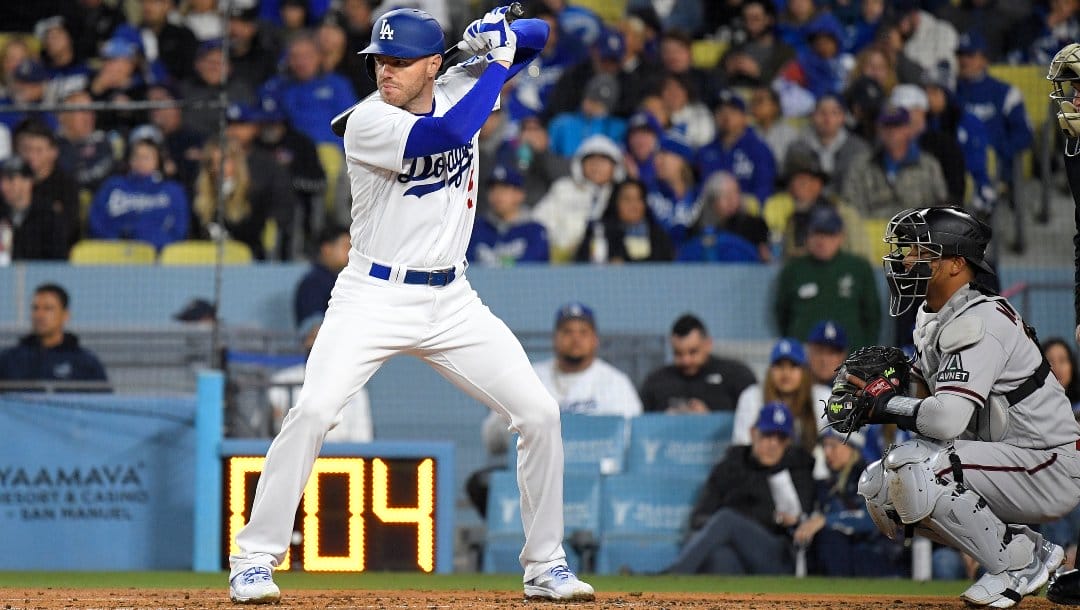- The 2023 MLB season sees the introduction of a range of new rules.
- These include the addition of a pitch clock and restriction of defensive shifts.
In September 2022, Major League Baseball passed a range of rule changes that have taken effect this season — and not everyone is happy about them.
From the pitch clock significantly shortening games to the restrictions on defensive shifts stopping players from moving out of their positions while fielding, the new rules aim to reshape baseball to attract new fans and reinvigorate the game. All of these rules have been tested in the minor leagues over the last few seasons, but some fans and experts argue that it moves a sport built on tradition away from its roots.
While spring training saw some clunky moments as players got used to the new rules, overall, I think it’s still too early to tell whether this is a good or bad thing for baseball. Games are shorter, but they don’t feel overly rushed, and if you hadn’t told me the bases were bigger, I wouldn’t have even noticed. There will be a natural adjustment period, as there is with any major change, but since it’s the first season of implementation, only time will tell if the new rules are a success.
So, what exactly are the new MLB rules?
MLB Rule Changes in 2023
Pitch Clock
Arguably the most noticeable rule change in 2023 is the introduction of the pitch clock, which limits the time between pitches to quicken the game.
Under the new rules, pitchers have 15 seconds to throw a pitch with the bases empty and 20 seconds with a runner on base. If a violation is called due to the pitcher not having started “the motion to deliver a pitch” when the clock expires, he will be charged with a ball.
The rule also requires hitters to be in the batter’s box with eight seconds on the pitch clock. If a violation is called due to the batter delaying entering the box, he will be charged with a strike.
Marcus Stroman has been called for the first regular season pitch-clock violation in MLB history pic.twitter.com/hqQ1MUmfy4
— Talkin’ Baseball (@TalkinBaseball_) March 30, 2023
Defensive Shifts
New rules in 2023 aim to ban certain defensive shifts, where fielders shift out of their traditional fielding positions to cover a specific area of the field. The goal is to increase the league-wide batting average, which was down to .243 in 2022, the lowest it’s been since 1968.
As of this season, the defensive team must have at least four players on the infield dirt, with at least two infielders completely on either side of second base. Players can move as soon as the ball leaves the pitcher’s hand.
If the infielders are not aligned in accordance with this rule at the time of the pitch, the batting team can choose to either accept the result of the play or take an automatic ball.
The new rules effectively ban both the infield shift, where infielders move to the right side of second base to create a shortstop-like fielder between first and second instead of between second and third, and the outfield shift, where the second baseman would move into the outfield to create a line of four defenders against big hitters.
Bigger Bases
In a move to decrease injuries and increase stolen base attempts, the size of bases has been increased from 15 inches to 18 inches.
Position Players Pitching
One of the more subtle rule changes this season is a new restriction on when teams can use a position player to pitch. As of 2023, position players are only allowed to pitch in situations where their team is leading by 10 or more runs in the ninth inning, their team is losing by eight or more runs at any time, or the game is in extra innings (regardless of score).
Not including two-way player Shohei Ohtani, there were a record 132 position player pitching appearances in 2022, which is a noticeable increase from 89 in 2021, and 93 total from 2010 to 2015. While position players pitching used to be a rare novelty occurrence, it’s now viewed as a strategy to save arms in the bullpen, but the increased risk of injury to an untrained pitcher motivated the new restrictions.
Pickoffs
Under the new rules, pitchers are allowed two “disengagements” per plate appearance without penalty. Disengagements include pickoff attempts, faking a pickoff, stepping off the rubber, or the defense requesting time, and the rule resets if a runner advances a base within the same plate appearance.
This means that a pitcher can make two pickoff attempts, but if he steps off the rubber for a third time during a plate appearance, he will be charged with a balk. This is designed to increase stolen base attempts across the league, which have been on the decline for years.
MLB Odds at BetMGM
The BetMGM online sportsbook is your ticket for baseball odds throughout year. Whether you’re looking for college baseball odds, MLB odds, or anything else there are baseball betting opportunities for everyone.
Sign in to your account today — or, if you don’t have an account, sign up today with a sportsbook welcome bonus — to start betting. And don’t forget to check updated sportsbook bonuses and promos each day of the year.


